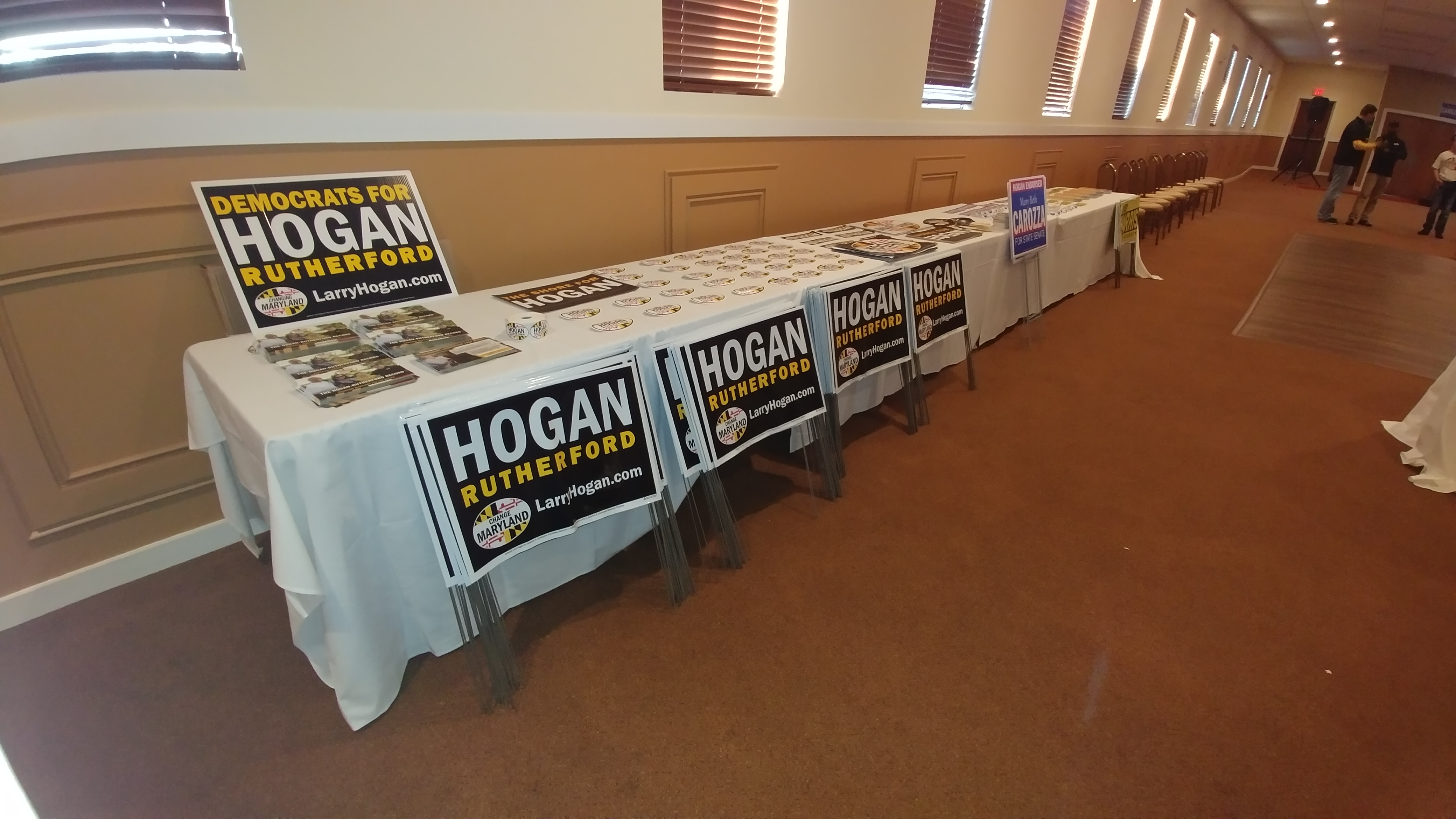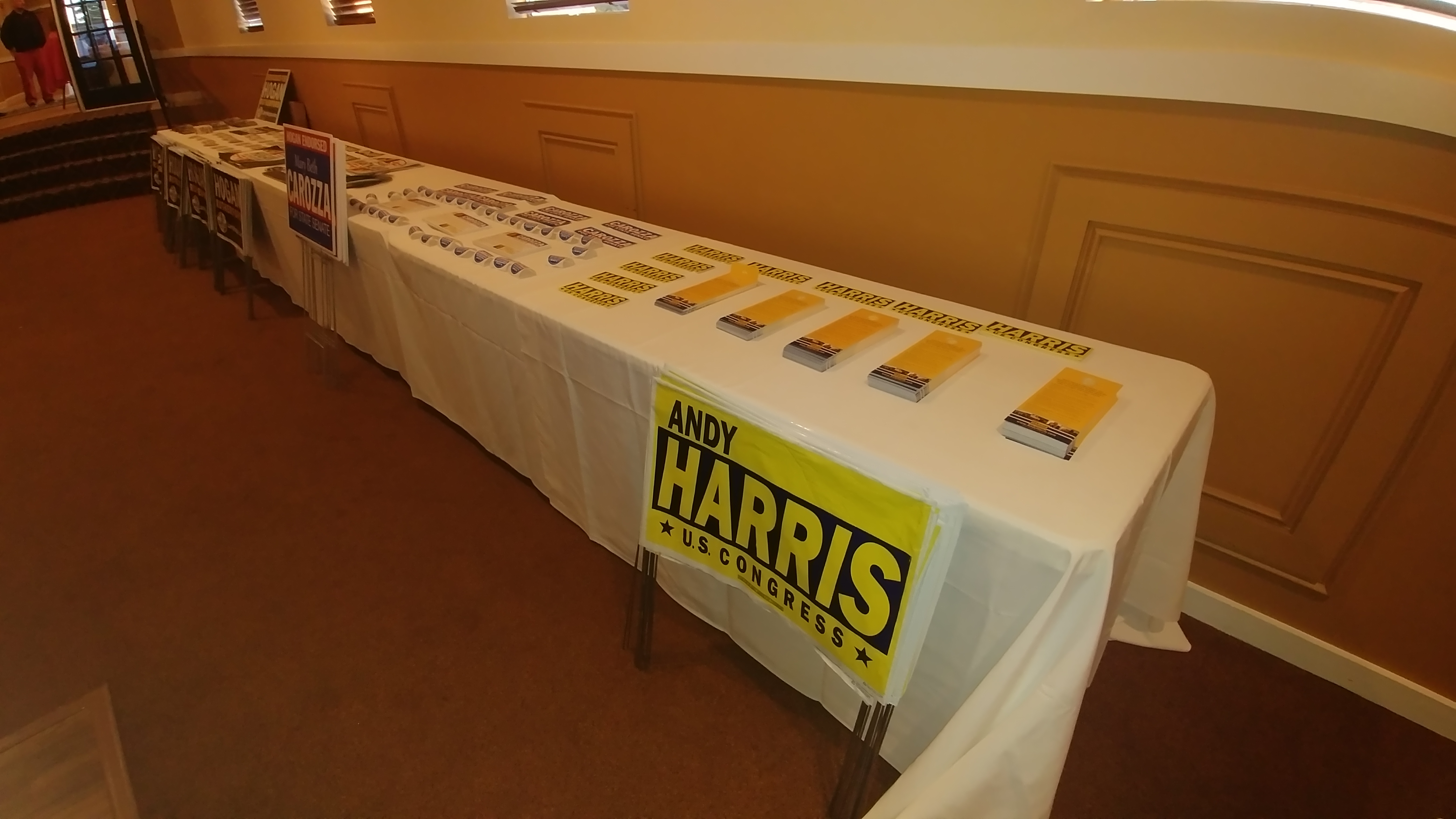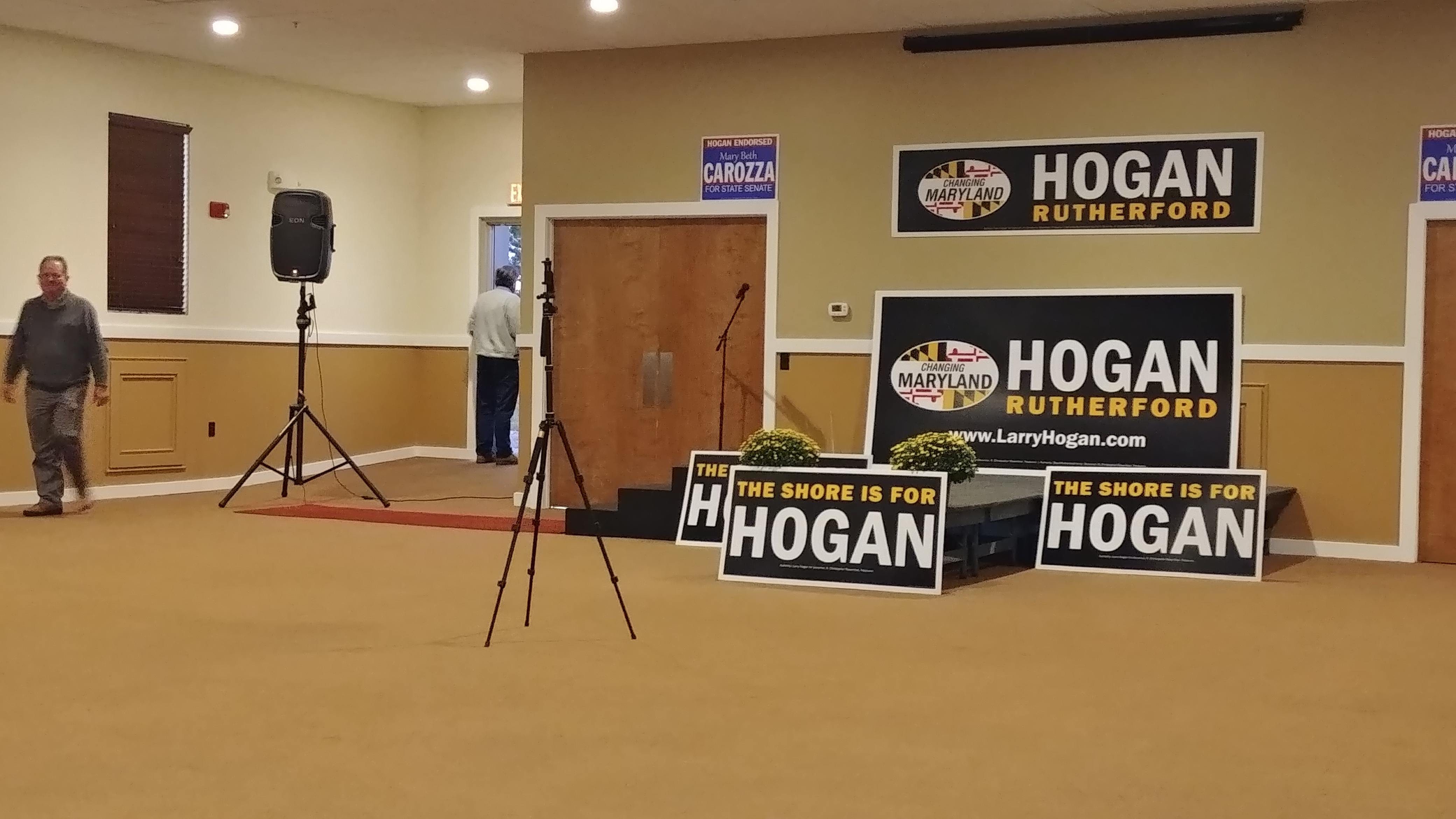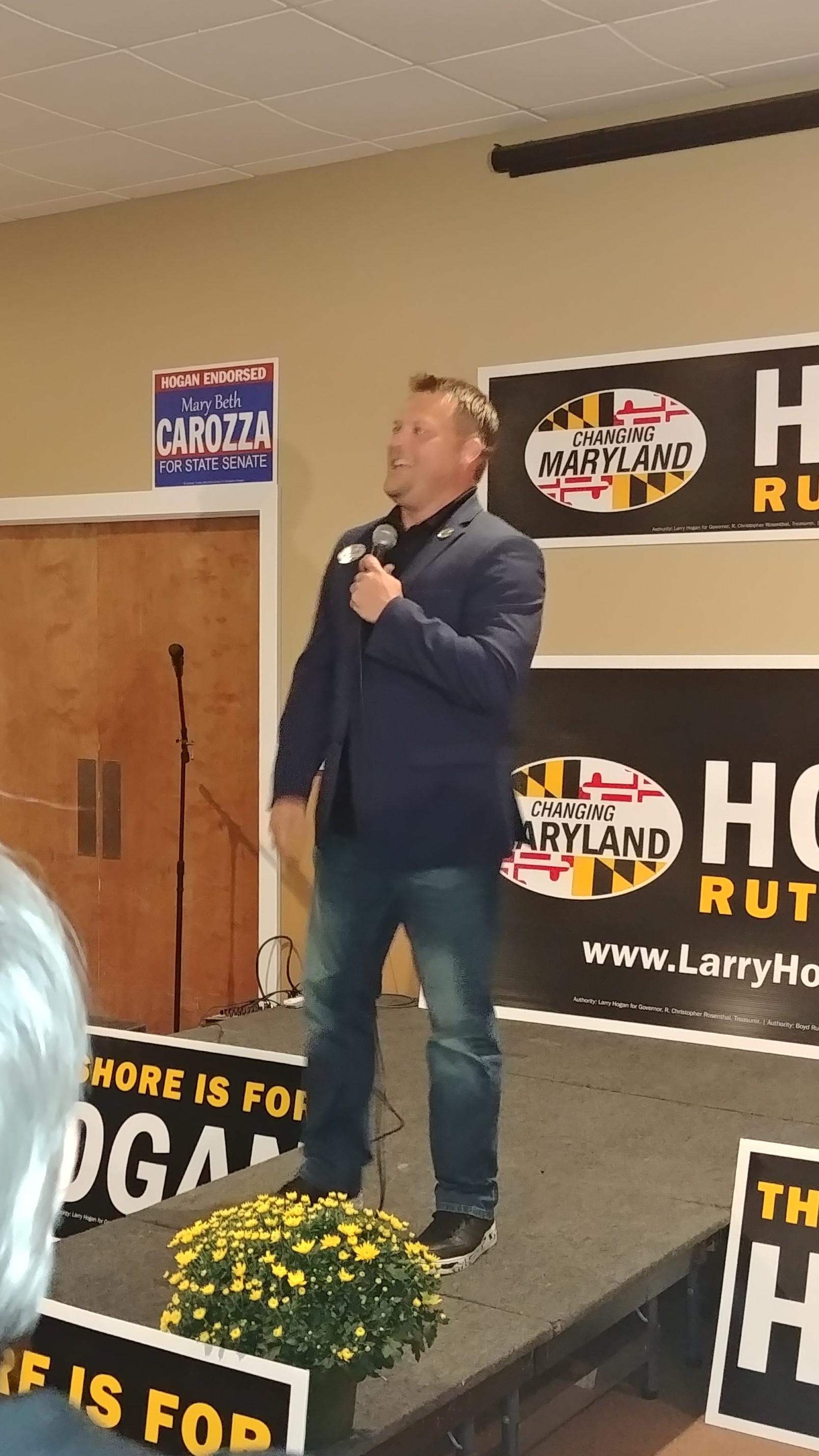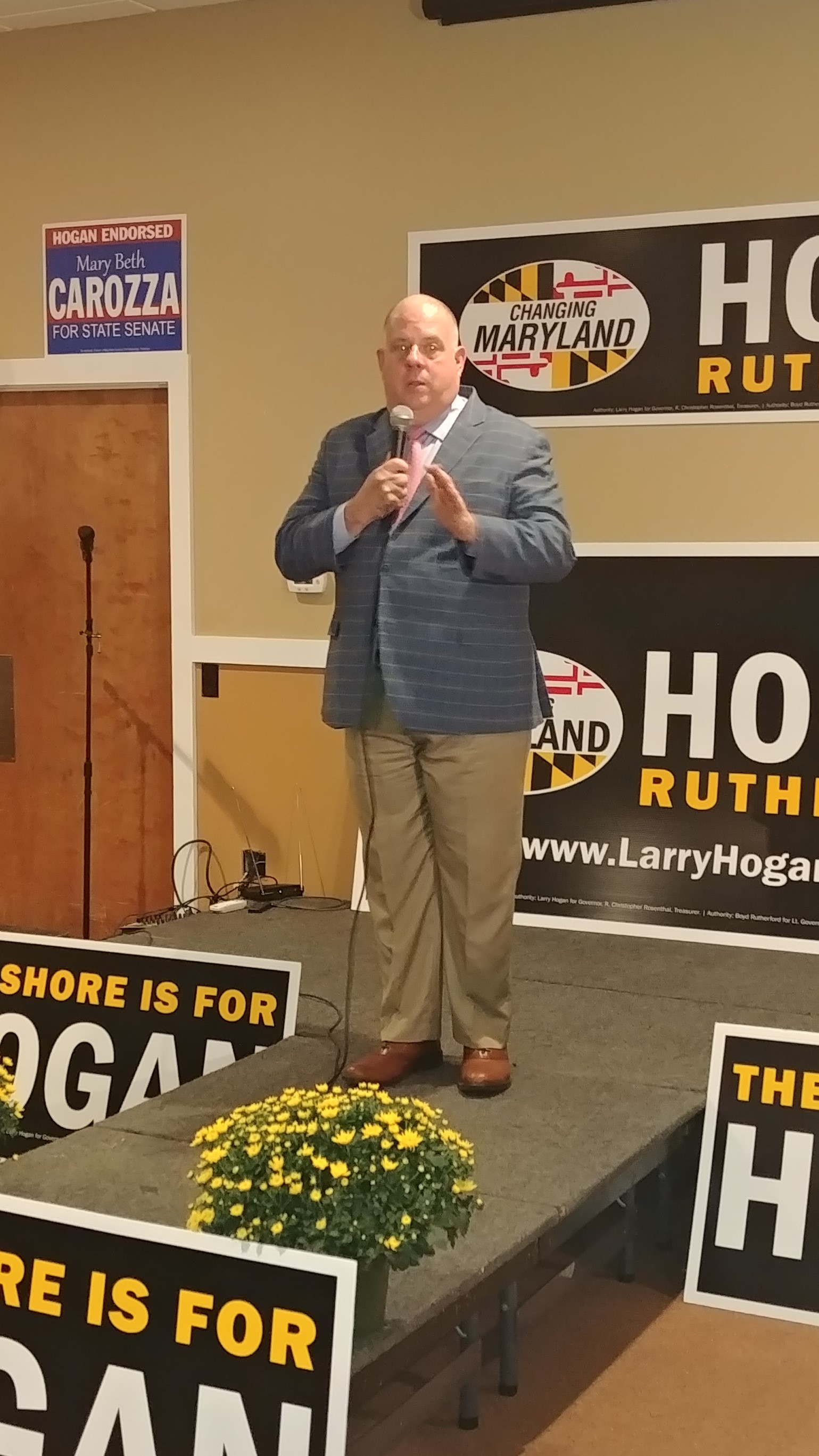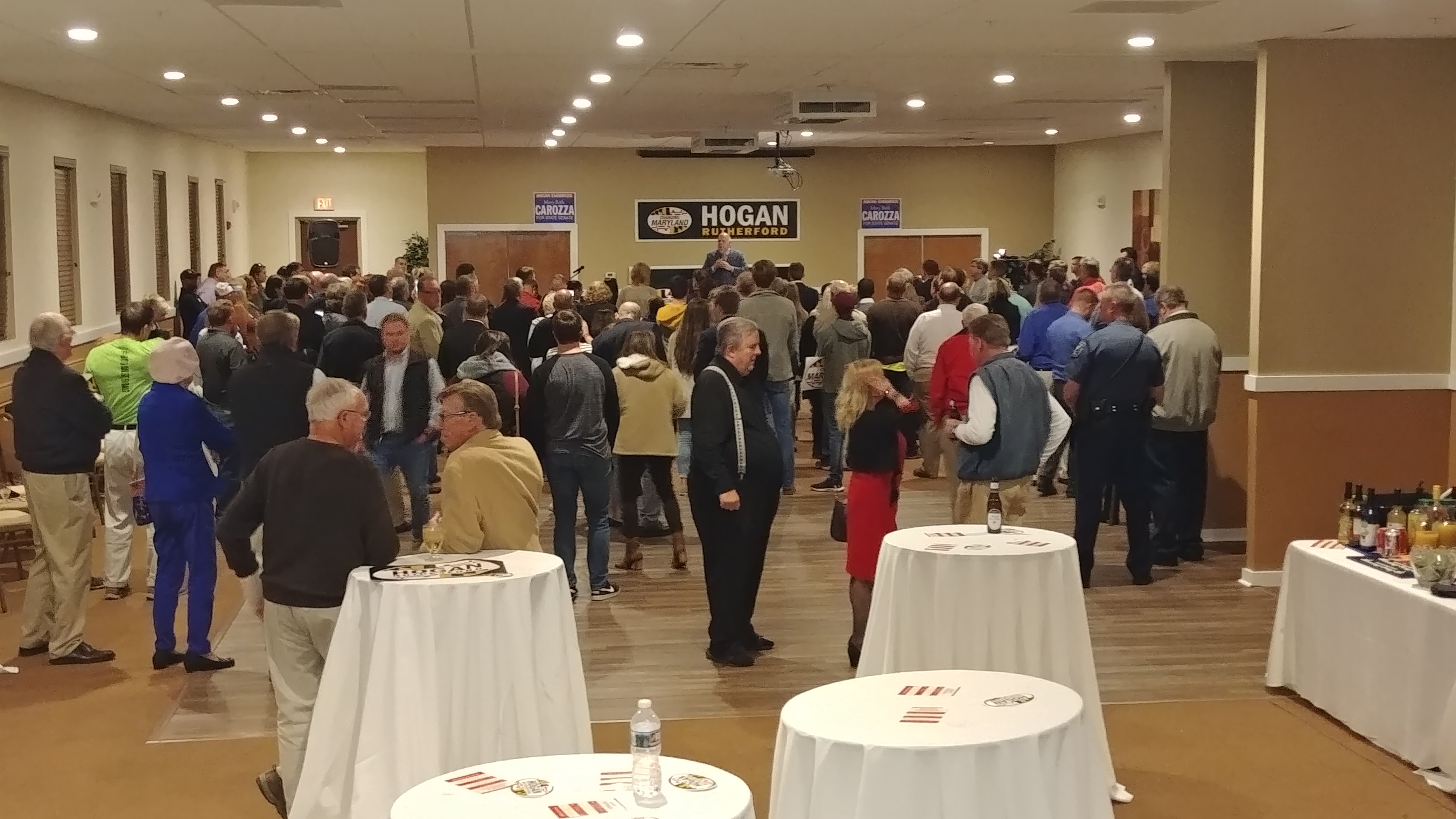From its institution (against my better judgment) for the 2010 election, early voting has become more and more of a portion of total turnout here in Maryland.
In 2010, when it was first adopted, only 11.77% of those who actually voted used the option, with 13.07% of Democrats and 10.13% of Republicans partaking, That number increased to 15.75% of voters in 2012 (18.44% of Democrats, 11.98% Republicans), and – once early voting was expanded from six to eight days – to 17.66% of those who voted in 2014, with 19.86% of Democrats and 15.61% of Republicans using the option.
In the last go-round in 2016, however, early voting came into its own: a full 36.02% of Democrat turnout came during early voting, while 24.76% of Republicans who voted used the option. All told, an astounding 31.23% of those who voted did so early.
So it was no shock that Democrats “won” early voting once again: according to the Maryland Board of Elections, 16.72% of eligible voters came out for the eight days of early voting. (19.08% were Democrats, 15.44% were from the GOP.) While this is less than the 22.48% that came out in 2016, bear in mind turnout isn’t nearly as good in a midterm election. The all-important question, though, is what percentage of overall turnout is represented by early voting. In 2014 just under 50% of Republicans waited until Election Day to vote (49.6% to be exact) but only 37.5% of Democrats voted on Election Day.
If the 2014 numbers hold true, though, turnout for Democrats will be over 10% better than the last gubernatorial election, which was for an open seat, as former Governor Martin O’Malley was term-limited, but the GOP will counter much of that increase with a stratospheric 65% turnout of their own. The question, therefore, is whether those extra 10% of Democrats are going to be loyal to Democrat gubernatorial candidate Ben Jealous or not – he basically needs them all to be to drive incumbent Larry Hogan’s numbers among Democrats down to the 20% or so he needs in order to defeat Hogan – despite polls that have had Jealous down double-digits all summer.
As evidence of just how early voting may affect the races, I put together a series of charts. The first one is a straight comparison of raw vote totals from the 2016 early voting and the 2018 version, divided by county and by party. It wasn’t worth comparing to 2014 because its totals were blown away just a few days into early voting and the 2016 election provides a better guide for both turnout and proportion of early voters.
| D 2016 | D 2018 | R 2016 | R 2018 | Un 2016 | Un 2018 | |
| Allegany | 1435 | 1013 | 1815 | 1361 | 468 | 263 |
| Anne Arundel | 38527 | 35630 | 25550 | 22849 | 12314 | 10779 |
| Baltimore City | 59562 | 42176 | 3054 | 2055 | 4983 | 3129 |
| Baltimore | 83525 | 66160 | 28522 | 24597 | 14654 | 11071 |
| Calvert | 5457 | 3950 | 5147 | 3660 | 1861 | 1216 |
| Caroline | 1434 | 1142 | 1796 | 1637 | 465 | 339 |
| Carroll | 6374 | 5715 | 10313 | 8947 | 2866 | 2267 |
| Cecil | 4058 | 2996 | 5062 | 3738 | 1707 | 1105 |
| Charles | 17749 | 11849 | 5261 | 3284 | 2882 | 1701 |
| Dorchester | 1922 | 1529 | 1424 | 1243 | 355 | 248 |
| Frederick | 14338 | 11688 | 10550 | 8328 | 5446 | 3818 |
| Garrett | 812 | 710 | 2310 | 1903 | 309 | 216 |
| Harford | 18221 | 14926 | 19496 | 15994 | 6647 | 5025 |
| Howard | 35295 | 28421 | 12996 | 10450 | 10863 | 8261 |
| Kent | 1806 | 1612 | 1101 | 987 | 461 | 380 |
| Montgomery | 111432 | 81388 | 21972 | 14518 | 27588 | 17418 |
| Prince George’s | 138257 | 90120 | 7974 | 4933 | 12681 | 7551 |
| Queen Anne’s | 3648 | 3103 | 5546 | 4710 | 1517 | 1188 |
| Saint Mary’s | 5120 | 3907 | 5829 | 4388 | 2065 | 1406 |
| Somerset | 1262 | 1001 | 1006 | 999 | 253 | 195 |
| Talbot | 3848 | 3623 | 4096 | 3790 | 1284 | 1118 |
| Washington | 4726 | 3457 | 5366 | 4108 | 1704 | 1182 |
| Wicomico | 5433 | 4794 | 4264 | 4001 | 1544 | 1182 |
| Worcester | 2950 | 2652 | 3376 | 3205 | 1017 | 870 |
| 26.37% | 19.48% | 19.11% | 15.44% | 15.76% | 10.63% | |
| 0.7387 | 0.808 | 0.6745 |
The number at the bottom is a comparison of percentages of voters – Democrats were 26.13% off their 2016 totals, while Republicans were only 19.2% off and all the others were 32.55% off. In no instance did the 2018 total surpass a 2016 total, as can be expected – however, Somerset County Republicans finished just 7 voters short of matching 2016 turnout. That’s most likely good news for incumbent Delegate Charles Otto.
So then I broke it down by county. Rather than do all the counties, I’m just doing top and bottom 6 in terms of how they matched up 2018 vs. 2016. The higher the number (the proportion of turnout in 2018 vs. that of 2016), the more excited the electorate is.
| Top 6 Democrat counties | Top 6 Republican counties | |||
| Talbot | 0.9415 | Somerset | 0.993 | |
| Anne Arundel | 0.9248 | Worcester | 0.9493 | |
| Worcester | 0.899 | Wicomico | 0.9383 | |
| Carroll | 0.8966 | Talbot | 0.9253 | |
| Kent | 0.8926 | Caroline | 0.9115 | |
| Wicomico | 0.8824 | Anne Arundel | 0.8943 | |
| Bottom 6 Democrat counties | Bottom 6 Republican counties | |||
| Prince George’s | 0.6518 | Prince George’s | 0.6186 | |
| Charles | 0.6676 | Charles | 0.6242 | |
| Allegany | 0.7059 | Montgomery | 0.6608 | |
| Baltimore City | 0.7081 | Baltimore City | 0.6729 | |
| Calvert | 0.7238 | Calvert | 0.7111 | |
| Montgomery | 0.7304 | Cecil | 0.7384 | |
| Statewide average | 0.7387 | Statewide average | 0.808 |
As you can see, there are some counties where turnout looks to be really, really good and others where it may be so-so – in particular, the Capital Region seems to be taking a beating while the Eastern Shore looked like they were ready from the word go. It’s telling to me, though, that traditionally Republican counties are leading the way for the Democrats while their strongholds lag behind – perhaps it’s the way for the minority to express a message?
But in those same Democratic strongholds Republicans aren’t coming out, either. Could they be believing the re-election of Hogan is a fait accompli and don’t see the purpose of voting in down-ticket races, or are they simply being traditional Republicans who wait until Election Day?
You may notice some counties have more on the Democrat side and others are looking good for the GOP. I tabulated these differences as well as the decline when it came to independents and unaffiliated voters, which have the steepest dropoff from 2016. The color on the right-hand chart is that of the party which led the county in percentage, as shown in the left-hand chart. So on blue counties it’s the difference between Republicans and the “others” and on red ones it’s Democrats vs. the unaffiliated and minor parties voters.
| Intensity difference (R vs. D) | Intensity difference (lower of D/R vs. Ind) | |||
| Somerset | 0.1998 | Anne Arundel | 0.019 | |
| Caroline | 0.1151 | Somerset | 0.0224 | |
| Dorchester | 0.0774 | Prince George’s | 0.0231 | |
| Baltimore | 0.0703 | Montgomery | 0.0294 | |
| Wicomico | 0.0559 | Charles | 0.034 | |
| Worcester | 0.0503 | Baltimore | 0.0366 | |
| Allegany | 0.044 | Washington | 0.0378 | |
| Washington | 0.0341 | Worcester | 0.0435 | |
| Kent | 0.0039 | Howard | 0.0436 | |
| Harford | 0.0012 | Baltimore City | 0.045 | |
| Cecil | 0.0002 | Talbot | 0.0546 | |
| Howard | -0.0011 | Calvert | 0.0577 | |
| Queen Anne’s | -0.0013 | Harford | 0.0632 | |
| Saint Mary’s | -0.0103 | Statewide average | 0.0658 | |
| Calvert | -0.0127 | Queen Anne’s | 0.0662 | |
| Talbot | -0.0162 | Caroline | 0.0674 | |
| Frederick | -0.0258 | Kent | 0.0683 | |
| Carroll | -0.0291 | Saint Mary’s | 0.0719 | |
| Anne Arundel | -0.0305 | Carroll | 0.0765 | |
| Prince George’s | -0.0332 | Frederick | 0.0883 | |
| Baltimore City | -0.0352 | Cecil | 0.0897 | |
| Charles | -0.0434 | Dorchester | 0.0969 | |
| Garrett | -0.0506 | Wicomico | 0.1169 | |
| Montgomery | -0.0696 | Garrett | 0.1248 | |
| Allegany | 0.144 |
Independent and unaffiliated voters were mixed in turnout: those representing “other” parties (holdovers from the previously-recognized Reform and Constitution parties, for example) led with 12.25% of 32,885 voters, but only 9.06% of the 9,164 Greens and 7.73% of the 21,713 Libertarians made it out. There were 10.66% of the 708,012 voters who list as unaffiliated at early voting, and they make up the bulk of the statistics.
I know it’s a lot of charts, but we can read a couple things into these, anyway.
For one thing, it does not appear that the feared malaise from constant chatter about a “blue wave” worked to dissuade overall GOP turnout. Granted, the Democrats might come fairly close on numbers, but the GOP should maintain its turnout lead they’ve had almost every election in the last 12 years, the lone exception being the Obama wave of 2008. This should enable Larry Hogan to stay in office, but it makes me question whether he will have coattails enough to get Craig Wolf – the GOP candidate for Attorney General – and the five new GOP State Senators he’s seeking into office. (High GOP intensity, though, is a good sign for the District 38 race – especially when two of the three GOP Delegates or primary winners for the post are unchallenged, save for a “sore loser” write-in effort in District 38C by perennial candidate Ed Tinus, a primary loser on the GOP side despite running for other offices as a Democrat.)
The other key point is that Republican voters outside the scope of the state’s two largest media markets (Baltimore and Washington, D.C.) seem to see this election as once again “the most important of their lives” and they are coming out accordingly. They are also reacting to downballot races – note the top three GOP counties (and two of the Democrats’ top six) are embroiled in perhaps the most heated State Senate race in Maryland, as I have frequently documented. On the other hand, lower turnout and enthusiasm in Democrat areas has to be worrisome to the state party, which has essentially abandoned its nominee Ben Jealous and appears to be concentrating on maintaining its hold on a State Senate majority that can override Larry Hogan’s vetoes. Their advantage in their regard is that none of their targeted State Senators are in traditional Democratic areas – in fact, ten of their number received free rides this year so they need only win half of the others plus one to maintain their vetoproof hold. Republicans also have a couple vulnerable seats they have to work hard to keep thanks to unaffiliated challengers and primary upsets.
But the real fun begins Tuesday. Those who voted early may be pleased to know that the forecast is for rain for most of the state, with the potential for severe weather. (Locally we are looking at just warm but cloudy.) Regardless, grab your umbrella and head out to the polls if you haven’t already.



